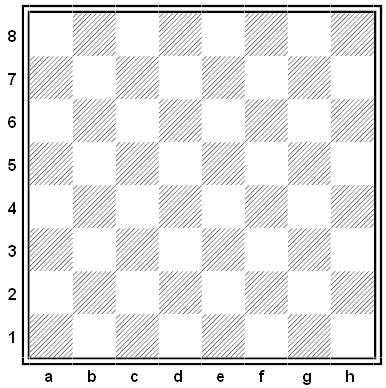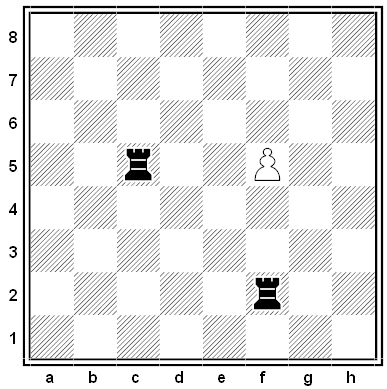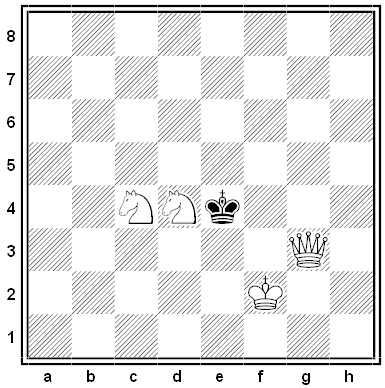The solutions to the chess puzzles on Futility Closet are written in algebraic notation. Each rank and file on the board is designated with a number or a letter:

By convention White is moving “up” the board, and Black down. The square in the lower left (“White’s queen rook one” in descriptive notation) is a1, and the square in the upper right (“White’s king rook eight”) is h8.
Each piece (except for pawns) is notated with a letter:
King = K
Queen = Q
Bishop = B
Knight = N
Rook = R
Each move is notated by giving the letter of the piece followed by the name of its destination square. If on his first move White moves his king knight to f3, this is notated 1. Nf3. Captures are indicated with an x: For example, if a bishop captures a piece on b6, this is notated Bxb6.
For pawn moves no letter is used — if on his 35th move White moves a pawn to the g5 square, this is notated 35. g5. But when a pawn makes a capture, the notation indicates the file from which the capturing pawn has moved, e.g., axb6.

In cases where this annotation would be ambiguous, some clarifying information is sometimes given. For example, in this position either rook can capture the pawn. If the rook on the c file makes the capture, this is annotated 1. … Rcxf5. (The ellipsis indicates a move by Black.) If the other rook made the capture we would write 1. … Rfxf5.
A few additional conventions:
en passant capture: exd6 e.p.
pawn promotion: a8=Q
castling: 0-0 (kingside) 0-0-0 (queenside)
check: +
good move: !
checkmate: #
Here’s a sample puzzle, by Augustus Lullman, from the Illustrated London News, 1848:

White is to mate in two moves. This means that White moves first, then Black replies, and then White mates him with his second move. The solution is that White moves the knight on c4 to b6. Now Black’s only legal move is to capture the knight on d4 with his king, whereupon White can deliver checkmate by moving his queen to e3. This is annotated:
1. Nb6! Kxd4 2. Qe3#
For more information, see the Wikipedia page on algebraic notation.
